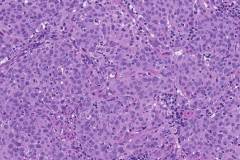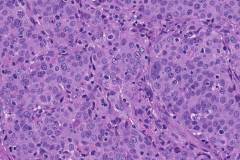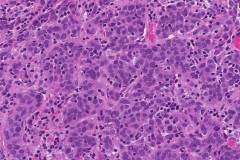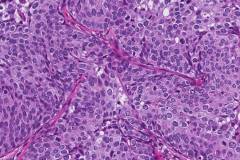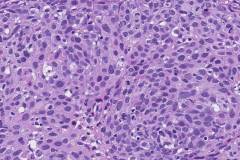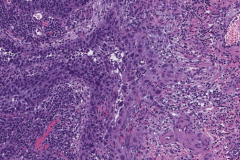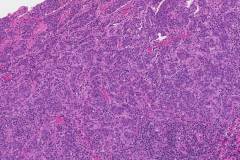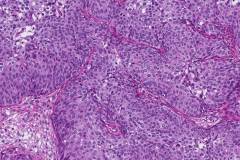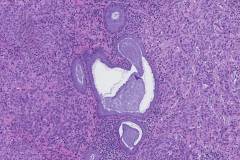Squamous cell carcinoma of the cervix is an invasive tumour showing squamous differentiation. This tumour is the most common type of cervical cancer and accounts for 70-85% of all cervical neoplasms. It arises from the precursor high-grade squamous intraepithelial lesion (HSIL), and most cases are related to prior infection with high-risk strains of human papillomavirus (HPV). Microscopically the tumour invades with a cohesive sheet-like pattern of growth. However, an infiltrating network of anastomosing bands or single cells within a desmoplastic stroma can also be seen. The morphology can vary widely from well-differentiated to poorly differentiated with variable amounts of keratinization. There are many histologic variants including sarcomatoid, lymphoepithelial-like, verrucous, condylomatous, papillary, and basaloid carcinoma. By immunohistochemistry, the tumour cells are commonly positive for CK5, p63 and p16.
